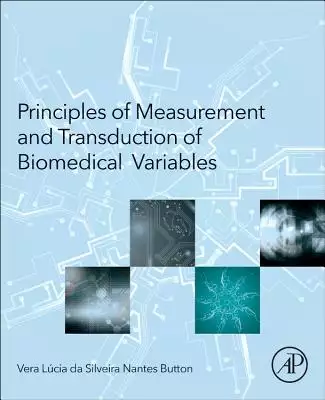principle of laser i的問題,透過圖書和論文來找解法和答案更準確安心。 我們找到下列必買單品、推薦清單和精選懶人包
principle of laser i的問題,我們搜遍了碩博士論文和台灣出版的書籍,推薦Button, Vera/ Costa, Eduardo寫的 Principles of Measurement and Transduction of Biomedical Variables 可以從中找到所需的評價。
國立臺灣藝術大學 視覺傳達設計學系 陳郁佳所指導 陳力瑜的 表現運動中的人體結構之創作研究 (2021),提出principle of laser i關鍵因素是什麼,來自於寫實描繪、重量訓練、人體結構。
而第二篇論文國立陽明交通大學 光電工程研究所 郭浩中、張書維所指導 楊棟的 三五族半導體雷射應用於光通訊之研究 (2021),提出因為有 垂直共振腔面射型雷射、分布式回饋雷射、半導體雷射、光通訊、矽光子的重點而找出了 principle of laser i的解答。
Principles of Measurement and Transduction of Biomedical Variables

為了解決principle of laser i 的問題,作者Button, Vera/ Costa, Eduardo 這樣論述:
Principles of Measurement and Transduction of Biomedical Variables is a comprehensive text on biomedical transducers covering the principles of functioning, application examples and new technology solutions. It presents technical and theoretical principles to measure biomedical variables, such as
arterial blood pressure, blood flow, temperature and CO2 concentration in exhaled air and their transduction to an electrical variable, such as voltage, so they can be more easily quantified, processed and visualized as numerical values and graphics. The book includes the functioning principle, blo
ck diagram, modelling equations and basic application of different transducers, and is an ideal resource for teaching measurement and transduction of biomedical variables in undergraduate and postgraduate biomedical engineering programs. Will help you to understand the design and functioning of biom
edical transducers through practical examples and applied informationCovers MEMS and laser sensorsReviews the range of devices and techniques available plus the advantages and shortcomings for each transducer type
表現運動中的人體結構之創作研究
為了解決principle of laser i 的問題,作者陳力瑜 這樣論述:
近年來,台灣的健康意識抬頭,人們對體態、塑身等相關議題,比以往更加熱烈關注,隨著運動產業的蓬勃發展,許多人開始養成定期運動的習慣。面對運動風潮,本研究擬以藝術性的手法表現運動中的人體結構,先透過解剖學觀點將運動過程中的人體動勢、肌肉與骨骼進行寫實描繪,再以透明片或透明壓克力等媒材加以彙整呈現光影效果,完成了二項創作研究。 第一項實驗創作以「瑜伽拜日式」為主題,透過逐格方式將拜日式的連續動作拆解為75個分解動作,再針對每個分解動作進行「體表、肌肉、骨骼」的分層描繪,並以透明片疊加來呈現三者之間的一體連動關係。創作展覽中呈現瑜伽動作在運動時,各部位肌肉的延展與收縮,骨骼的位移及體表上的變化
。 第二項主創作則以「重量訓練」為主題,以健身房常見之重量訓練動作為主,採用雷射雕刻在透明壓克力上,藉由媒材的穿透性呈現人體分層的結構,並針對每個動作進行「體表、肌肉、骨骼」的分層描繪,重訓的所有動作中,肌肉都是由主動肌、拮抗肌與協同肌三者相互協調而成,每一層設以間隔,使圖層之間交互投射產生光影變化,傳達一種相互呼應的連動效果,共創作十二幅寫實描繪圖像。 本創作成果透過寫實描繪方式同時呈現人體的內與外,希能讓民眾在運動時能藉此掌握身體各部位肌肉與骨骼相互牽動的原理。擬提供給大家在進行運動時參考,希能以更安全、正確的方式進行體能訓練,同時也以藝術欣賞的角度重新認識運動中的人體結構。
三五族半導體雷射應用於光通訊之研究
為了解決principle of laser i 的問題,作者楊棟 這樣論述:
隨著新一代行動通訊的發展,讓數據中心有更快的傳輸速率變成一項新的而且有立即重要性的開發課題。由於面射型雷射擁有了低臨界電流、高轉換效率與高調製頻寬的特性,導致其需求與性能應用在光通訊上的蓬勃發展,其中中心波長為850nm的面射型雷射(VCSEL)已成為在短距離(